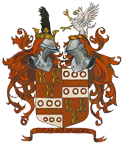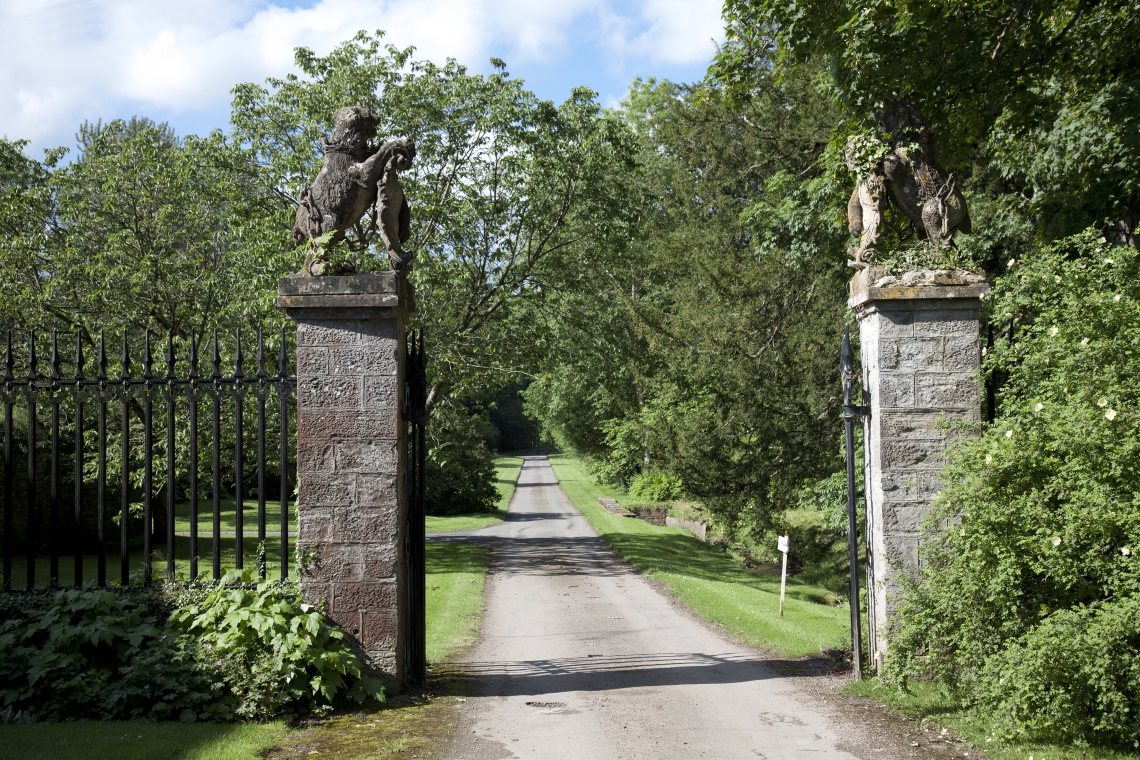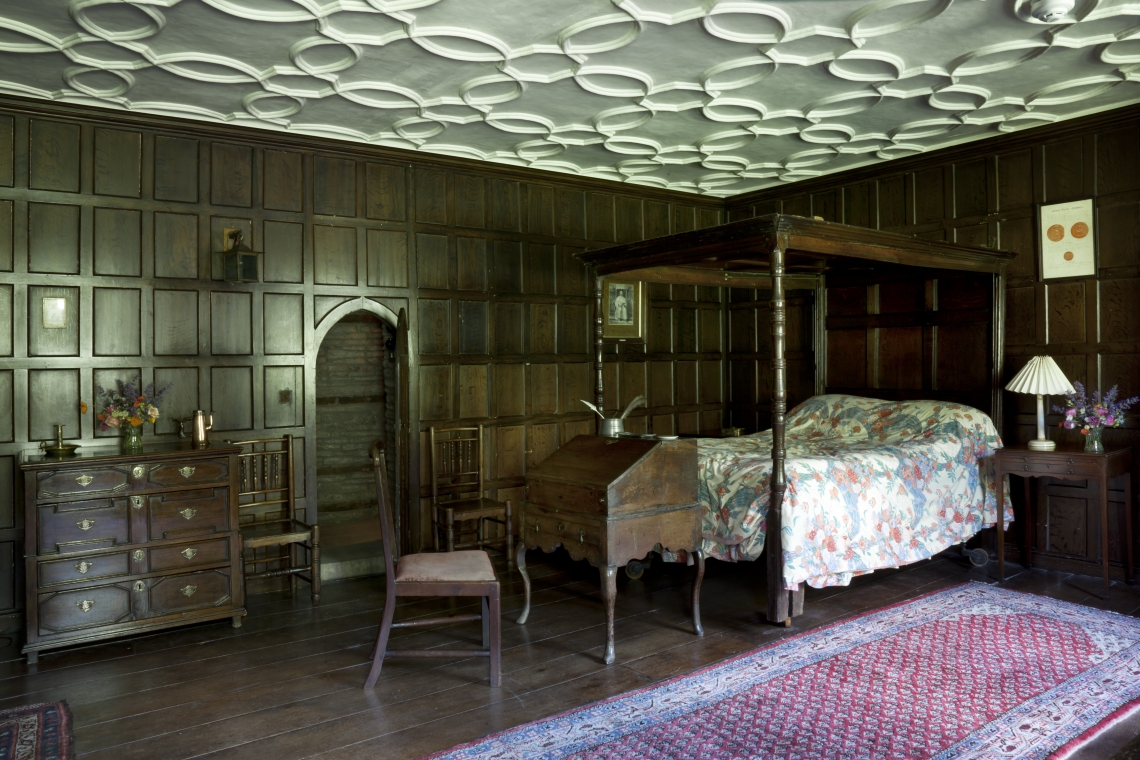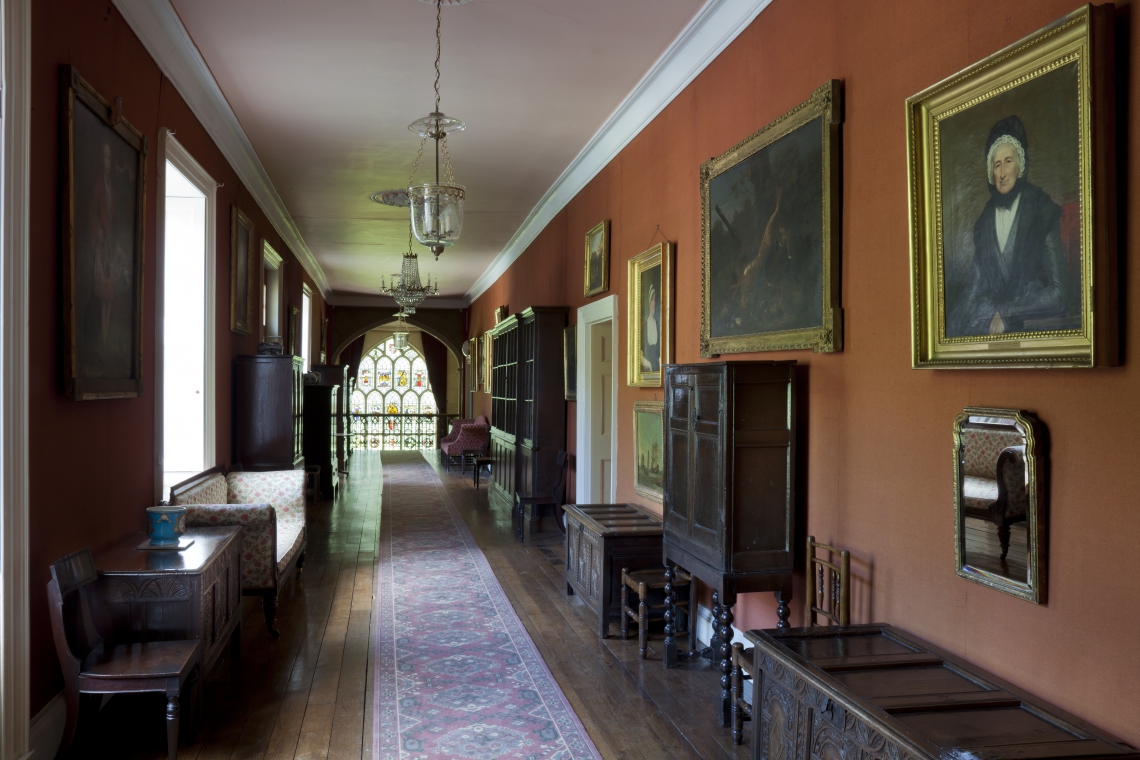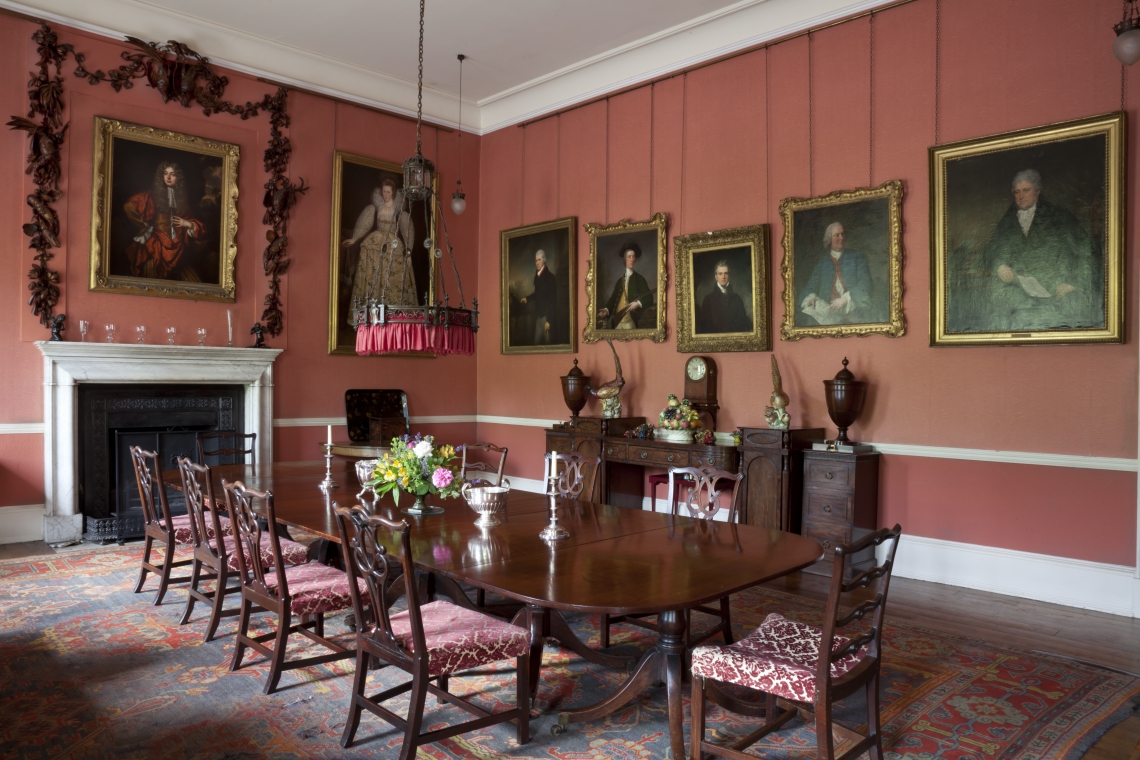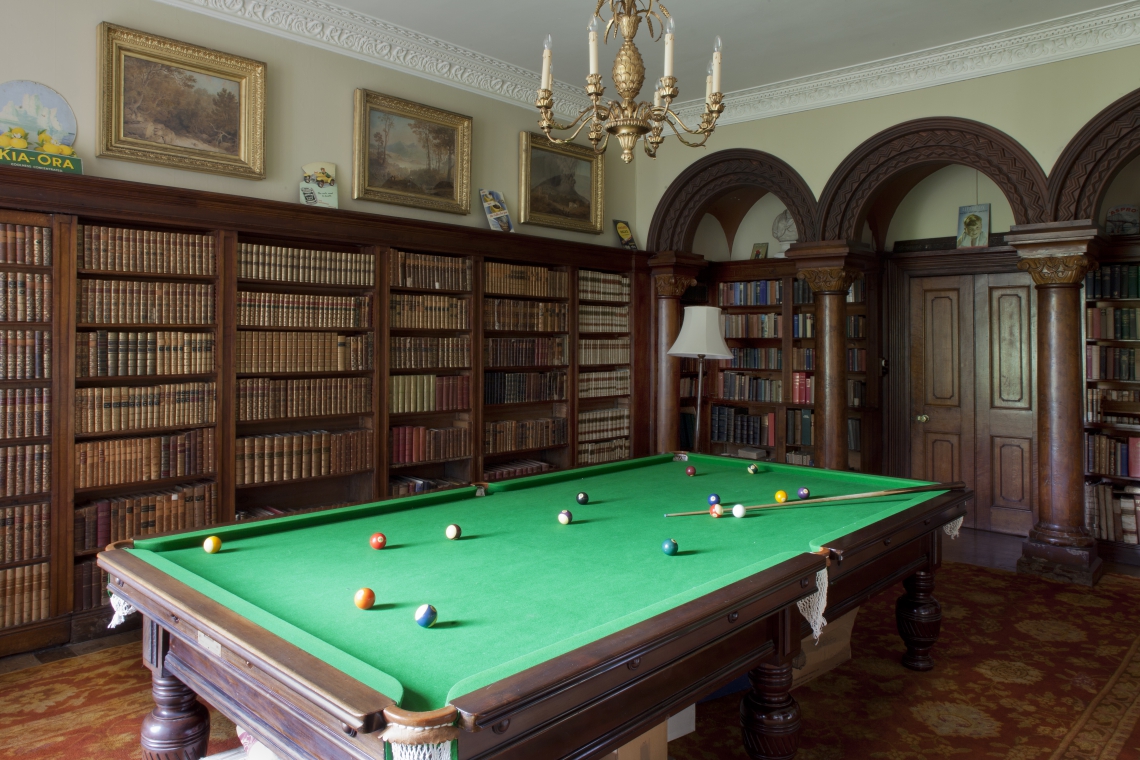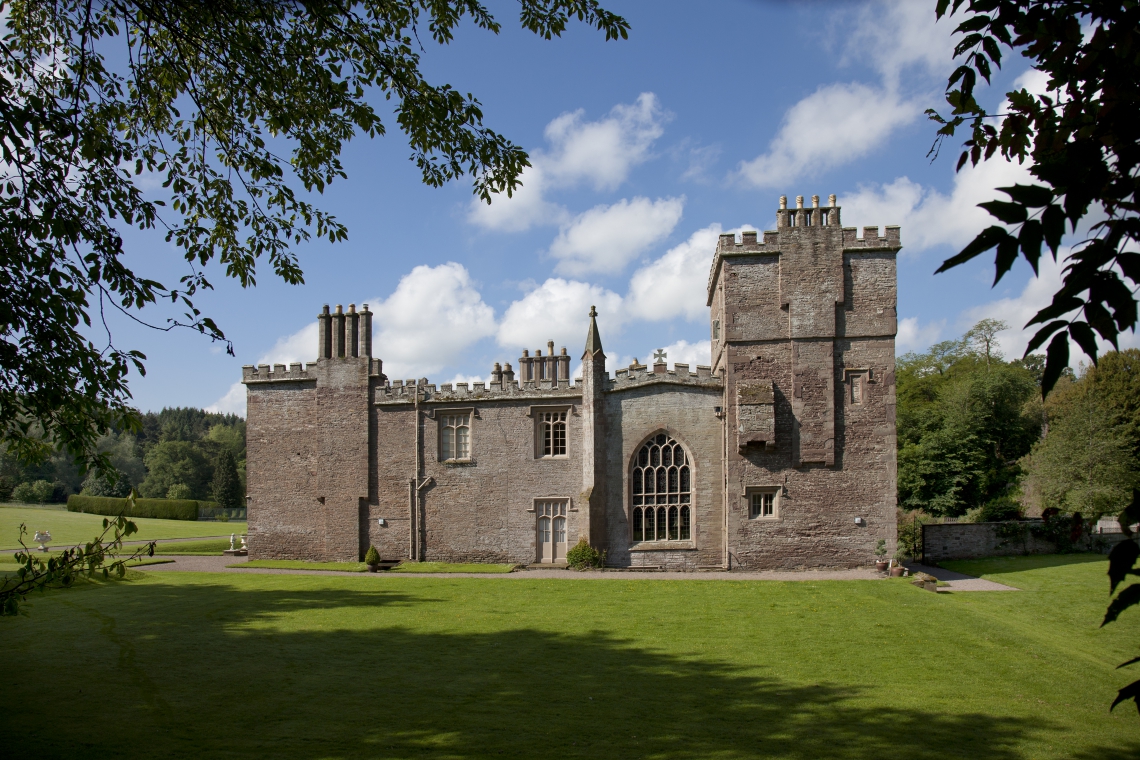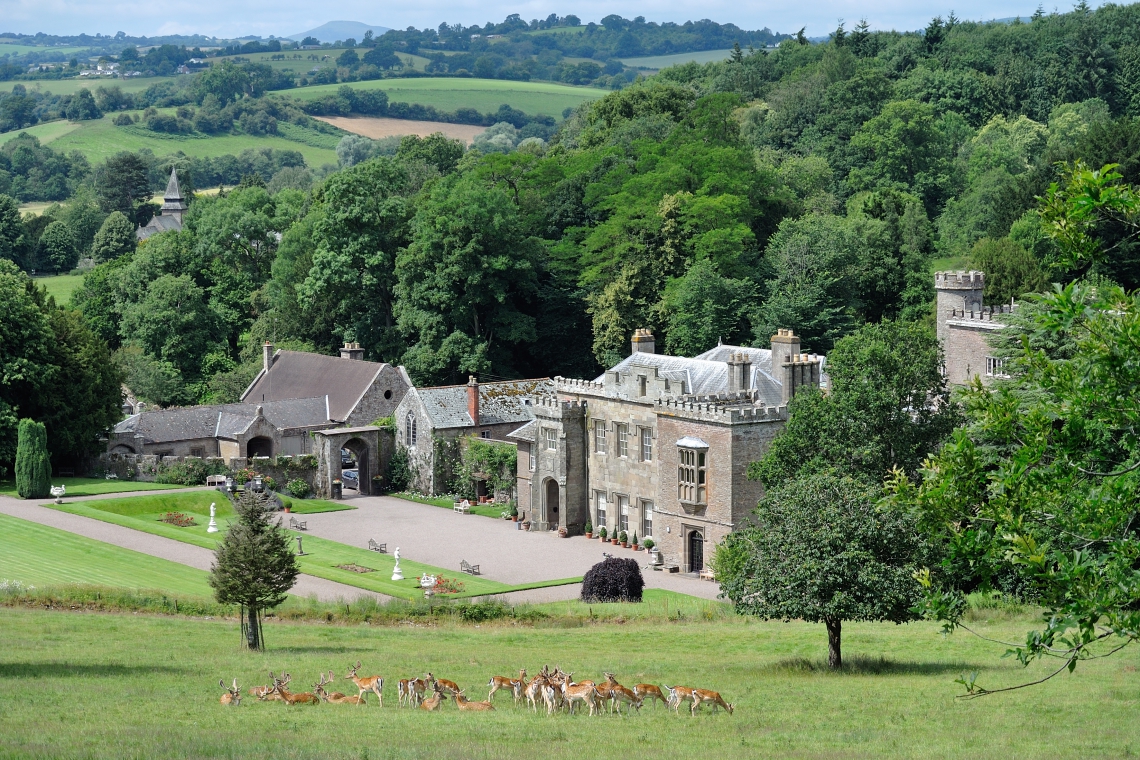Kentchurch Court and History
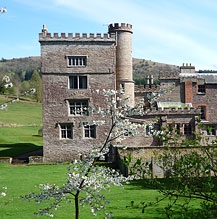 Kentchurch Court is a stately home situated in Herefordshire on the border of England and Wales. Kentchurch has been In the Scudamore family for nearly 1,000 years.
Kentchurch Court is a stately home situated in Herefordshire on the border of England and Wales. Kentchurch has been In the Scudamore family for nearly 1,000 years.
The first Scudamore recorded in the area was one Ralph Scudamore in 1042. A stonemason, brought over from Normandy by Edward the Confessor, to build the castle in Ewyas Harold. Ralph is mentioned five times in the Doomsday Book of 1086. These castles, were used to protect the English border from invasion by the Welsh.
The Scudamores first lived at 'Corras' with its motte and chapel on the banks of the River Monnow. A later branch of Scudamores, moved to a moted site at the end of the present drive, before moving to Kentchurch in the 14th century. The oldest part of Kentchurch (see picture above) was built with the chapel stones of Corras.
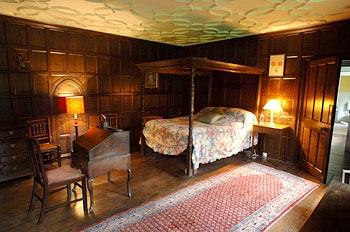 Owain Glendower, (the last Prince of Wales), daughter Alice, married John Scudamore. Owain Glendower is believed to have taken refuge at Kentchurch (in this room in the tower) after the failure of his rebellion against the English.
Owain Glendower, (the last Prince of Wales), daughter Alice, married John Scudamore. Owain Glendower is believed to have taken refuge at Kentchurch (in this room in the tower) after the failure of his rebellion against the English.
Sir James Scudamore, a jousting champion and courtier of Queen Elizabeth I, was also the inspiration for Edmund Spenser’s knight, in his epic poem The Faerie Queene, published in 1590 and 1596.
Sir James Scudamore, represents the character Scudamour, the lover of Amoret. His name means "the shield of love". Scudamour loses his love Amoret to the sorcerer Busirane. Although the 1590 edition of the Faerie Queene has Scudamore united with Amoret through Britomart's assistance, the continuation in Book IV has them separated, never to be reunited
In 1773, Col. John Scudamore invited Anthony Keck to redesign the interiors. Unfortunately, he did not carry out the work himself. In 1795, Col. John Scudamore commissioned John Nash to undertake Keck's ideas to modernise the house in the Gothic style.
After the death of Col. John Scudamore, the renovation of the house was not completed until the 1820s. When his grandson, John Lucy Scudamore and his wife Sarah (daughter of Sir Harford Jones Bridges, England's first Ambassador in Persia) inherited the house. He instructed Thomas Tudor to complete the work, putting in the front door and the hall, with its barrel vaulted ceiling.
Kentchurch Court's collection of portraits date back to the 16th C. The Grinling Gibbons carvings, originally commissioned for Holme Lacy House (home of the 1st Viscount Scudamore) now grace the dining room and terrace room walls.
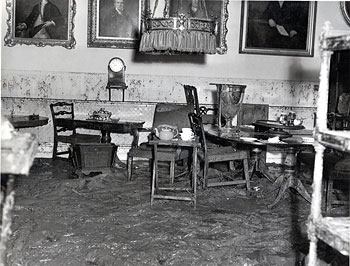 In May 1959, as a result of a freak flood, part of the house had to be taken down. The water reached a depth of 5' 4" in the front rooms and 9' 7" in the kitchen. The Aga, was washed from one side of the kitchen to the other! The carpets were buried in up to 18" of mud. Local farmers with their tractors, dragged the carpets out through the windows.
In May 1959, as a result of a freak flood, part of the house had to be taken down. The water reached a depth of 5' 4" in the front rooms and 9' 7" in the kitchen. The Aga, was washed from one side of the kitchen to the other! The carpets were buried in up to 18" of mud. Local farmers with their tractors, dragged the carpets out through the windows.
After the flood, the floor boards had to be taken up, numbered and stacked to dry. The restoration of Kentchurch Court could not have taken place without the driving support of the volunteers who came in everyday to clean, dry and salvage the contents. (In the photograph, the dining room has been set for breakfast, the water has risen and fallen leaving the cups in the same place!!).
It took 2 years for the house to dry sufficiently, before the floorboards and furniture could be reinstated and Lt. Commander Jack Lucas-Scudamore and his wife Lady Patricia (daughter of the 12th Earl of Chesterfield), to return to the family home.
George Bernard Shaw, a friend of Sybil Lucas-Scudamore was a regular visitor at Kentchurch.
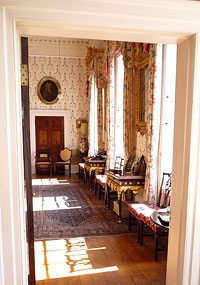 The house has been used for various film locations over the years. Including ‘The Vault of Horror’, ‘On the Black Hill’, ‘The Regency House Party’ and most recently ‘Country House Rescue’.
The house has been used for various film locations over the years. Including ‘The Vault of Horror’, ‘On the Black Hill’, ‘The Regency House Party’ and most recently ‘Country House Rescue’.
To enable the house to be used for The Regency House Party, it took Jan Lucas-Scudamore nine weeks and three miles of bubble-wrap to ‘pack up’ the house!
In the process, Jan uncovered a pair of Queen Victoria's cream silk stockings, a eulogy written by Winston Churchill on the death of his aunt Leonie Leslie (Leonie was a friend of Sybil's, therefore, Churchill must have sent her a copy). Letters and Christmas cards from Robert Baden-Powell were also discovered.
(Some photos are courtesy of James Fennell)
